This month, I came across a pretty interesting looking little design on Kickstarter from Philip duBarry the designer who did Black Orchestra. The game is called Order of the Day: Normandy and deals with the D-Day Landings on June 6, 1944 during World War II. A fitting game for the celebration of the 80th Anniversary of the largest amphibious assault in history. The game is marketed as an introductory wargame that is playable by new wargamers but also those who are more experienced. As is the case with most of the games from The Dietz Foundation, the game is designed as an educational tool. I reached out to Philip and he was very interested in sharing about his design.
If you are interested in Order of the Day: Normandy, you can back the project on the Kickstarter page at the following link: https://www.kickstarter.com/projects/dietzfoundation/order-of-the-day-normandy
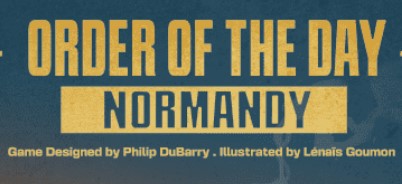
Grant: First off Philip please tell us a little about yourself. What are your hobbies? What’s your day job?
Philip: My name is Philip duBarry. During the school year, I work as a substitute teacher (usually at the middle school level). On the weekends and throughout the week, I also serve as the Associate Pastor of my church. I am also the executive secretary to a Baptist missions organization. In addition to games, I enjoy reading, watching movies, working puzzles, and cooking.
Grant: What motivated you to break into game design? What have you enjoyed most about the experience thus far?
Philip: I’ve been playing games for as long as I can remember. My dad introduced me to all the classics: Chess, Monopoly, Risk, Stratego and many others. I’ve also been making games since childhood. It’s just something I’ve always done. Things really got serious after I made Revolution! and realized that other people actually wanted to play it. When I got a call from Steve Jackson Games about publishing it, I decided to continue making lots of other games at a professional level.
Grant: What have you learned over the years from your various designs like Black Orchestra and Kingdom of Solomon?
Philip: One of the biggest lessons I have learned is just how long everything usually takes in the board game industry. I have gotten used to waiting multiple years for a signed game to be produced. This has not been the case with The Dietz Foundation though! Jim has worked hard to get Order of the Day: Normandy ready to go.
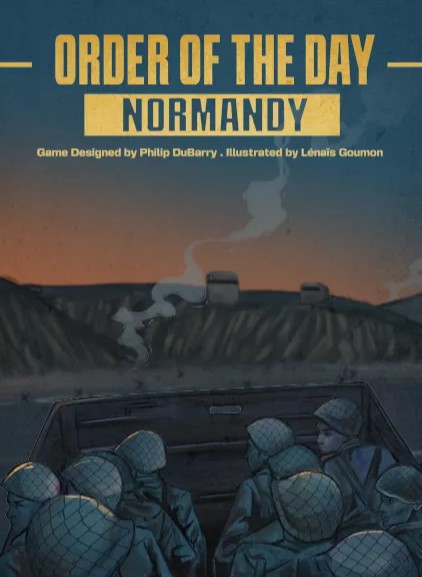
Grant: What is your upcoming game Order of the Day: Normandy about?
Philip: My new game is about the D-Day invasion on June 6, 1944. This is a two-player game where one player controls the Allied invasion and the other player prepared to defend the Axis positions in occupied France.
Grant: Why was this a subject that drew your interest?
Philip: This project is really all about my dad. He has been asking for me to make a game about D-Day for many years. A few years ago, we got the chance to sketch out some solid ideas of how best to approach it. My dad has always been a history buff, and few episodes capture the imagination like D-Day. We have both been fascinated with this event for a long time.
Grant: What is your design goal with the game? Who is your audience?
Philip: So many war games take forever to play and have way too many rules. I enjoy simpler games and wanted this game to be something for a wider audience. It’s always tricky to know how much abstraction is needed to make a complex topic playable while still retaining the desired experience. For Order of the Day, I wanted players to be making more of the overarching strategy decisions such as where to invade and which beaches to defend. The playtime is around 90 minutes and the rulebook is mercifully short.
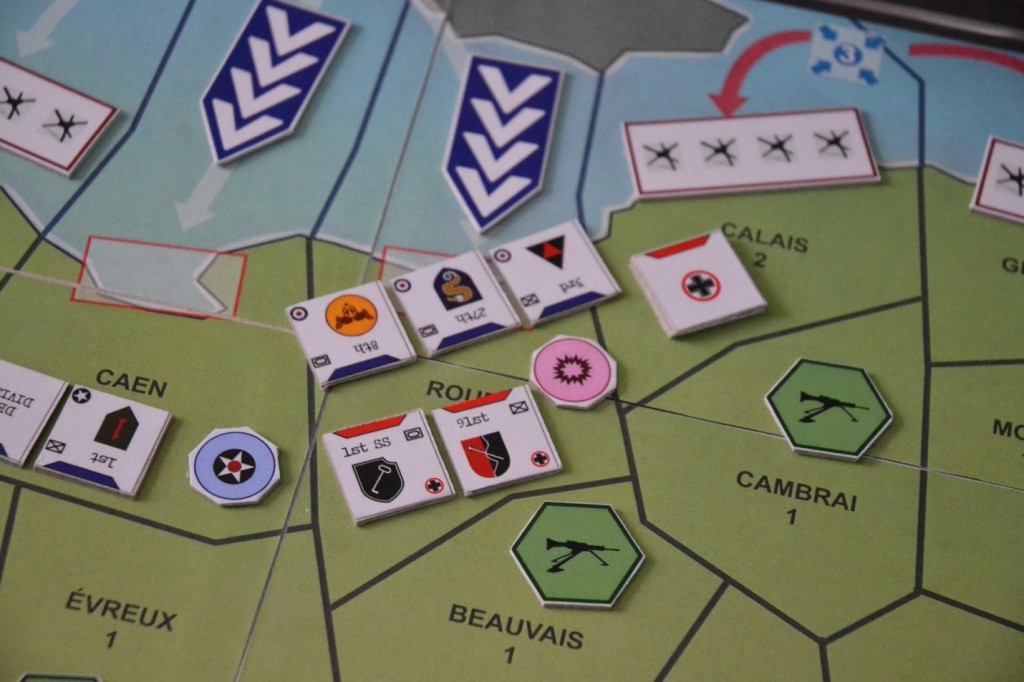
Grant: What sources did you consult to get the historical details correct?
Philip: I read a number of books and have watched many documentaries. In many ways, I have grown up learning about this phase of World War II. I feel like I understand the history but also a bit of its cultural significance—not only what really happened, but what people think happened. I also like thinking about how things might have gone differently.
Grant: Does the game require knowledge of the D-Day invasion to play? Why is that important to you?
Philip: It absolutely does not require any previous knowledge. I am hoping this game inspires players to learn more about the campaign on their own. However, I also want the game to ring true for players who have a deeper knowledge of the game. Because it is so abstract, there are so many important details that simply couldn’t be included without negating the simplicity of the game. But I think some people might be able to fill in some of the gaps with their own understanding of how things really were.
Grant: What elements of the D-Day Landings and eventual breakout did you need to model in the design?
Philip: From the beginning, dad and I wanted the Allies to be able to choose the invasion zones. Lots of D-Day games just start out right on Omaha beach. We wanted that to be in doubt. So the first part of the game is about the cat-and-mouse secrecy of planning the invasion and the coastal defenses. Will you evade the toughest beach or land right in its teeth? It was also important to give both sides a fair shot at winning while still acknowledging the overwhelming forces the Allies brought to bear. The German player just needs to hold on long enough to claim victory.
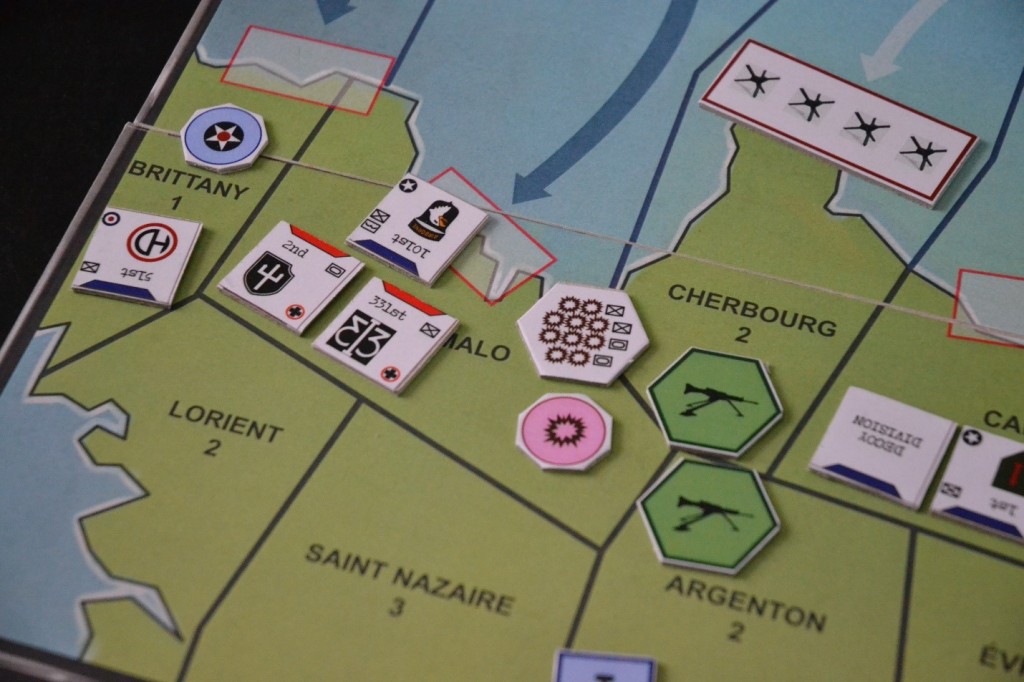
Grant: What is the scale of the game? Force structure of the units?
Philip: Because we wanted to emphasize the overall strategy, I decided to go with units being represented as divisions. This allows for individual unit types (anti-tank battalion) but also yields about the right number of counters on the board. My map is a little larger than the historical D-Day theatre, mainly to allow for different possible landing sites.
Grant: What is the general Sequence of Play?
Philip: The game begins with Round Zero. It’s an actual part of the game, but guides the setup and first wave of the invasion, concluding with a round of combat. All normal rounds include movement (infantry moves 1, armor moves 2), placement of fighters by the Allies, reinforcements (forming and adding new divisions), experience (adding a new combat card to your deck), and ends with another round of combat.
Grant: What do the units look like? What advantage does having them as cards provide the design?
Philip: You can see some example cards below. Each division is made up of one or two unit cards. They get assigned a division banner tile that matches the token on the board. One thing that adds a lot of time to most war games is moving all the individual components. In this game, you are moving a group of units all a once. Cards also allow for an easy way to track damage.
Grant: Can you share a few different unit types and explain their differences?
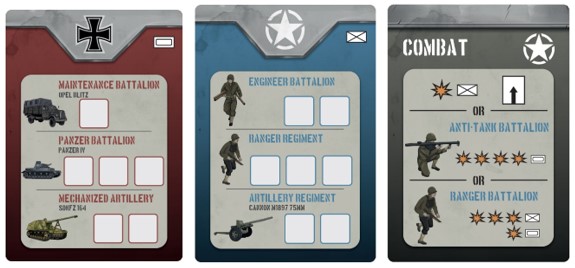
Philip: Here we have an Axis unit and an Allied unit. You will first notice that each type of unit has a different number of hit points, representing their tenacity on the battlefield. However, each unit has some additional benefits on their associated combat cards.
Grant: How are cards used in the combat process?
Philip: During combat, each side will form a mini-deck of the top five cards in their combat deck. Once these five cards have been resolved (or one side is destroyed), the combat ends. Some larger battles may rage for several rounds during the game. To resolve a card, simply reveal the top card of your mini-deck for that combat. Most cards let you do a base amount of damage (either against infantry or armor—or both). However, if you have units in the battle that match those on your combat card, you may have some better options.
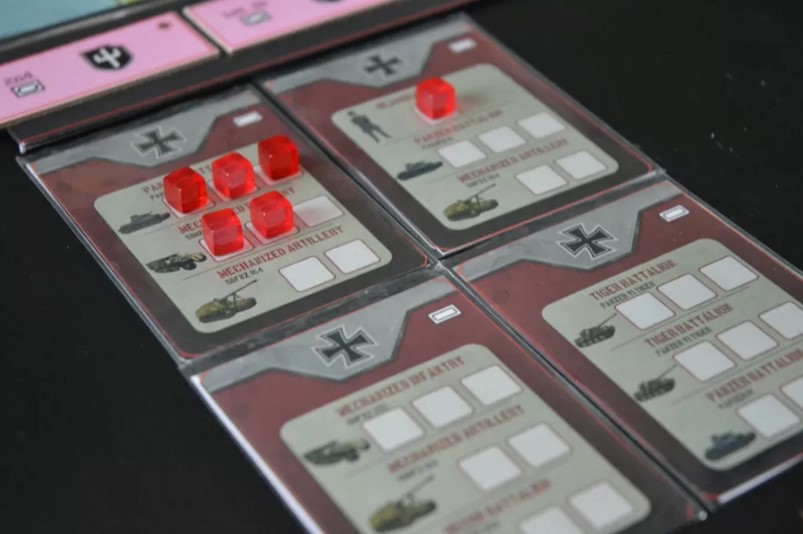
Grant: Can you share a few examples of these combat cards and explain how they work?
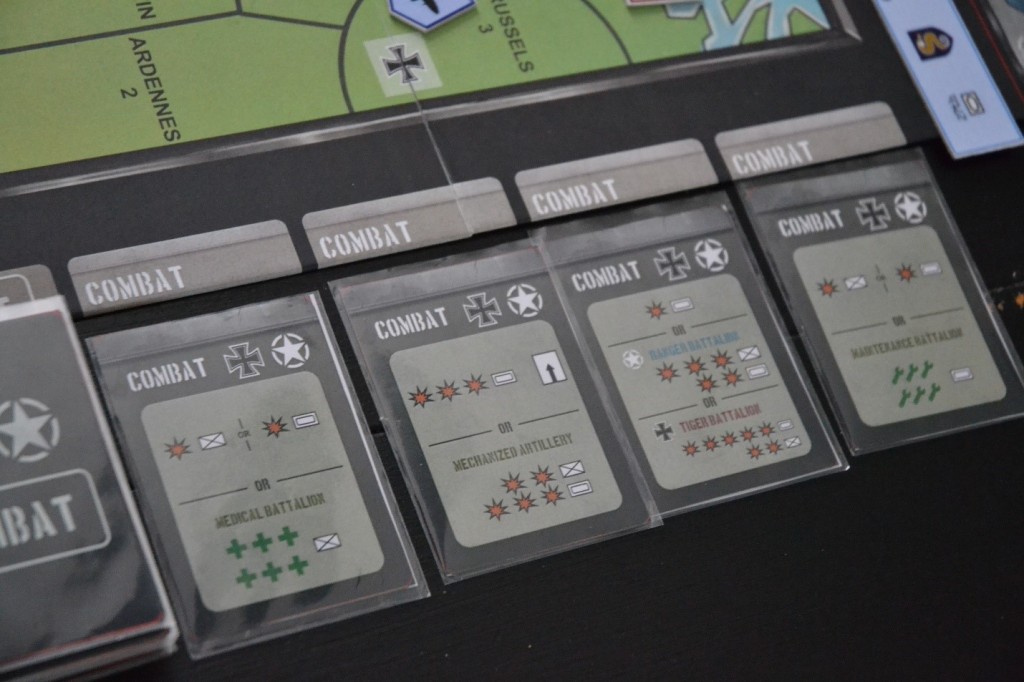
Philip: In the second card here, you would cause three hits against armor units (for this card the hits would start at the bottom and go up—normally hits must be taken top-to-bottom). However, if you have a mechanized artillery unit in the battle (like the one on the Axis unit card shown earlier), you would do 3 hits against armor AND 2 hits against infantry. Medical battalions and maintenance battalions allow you to heal units in the battle. Some cards just miss and do no damage at all.
Hits may be placed on any division involved in the current battle. Once a particular unit has all its hit points filled, it is no longer considered to be in the unit—it has been destroyed. If you destroy an entire division, you get to take a new combat card from the display and add it to your discard pile. The players each start with a basic deck, but new cards will make them more powerful.
Grant: What is the layout of the game board?
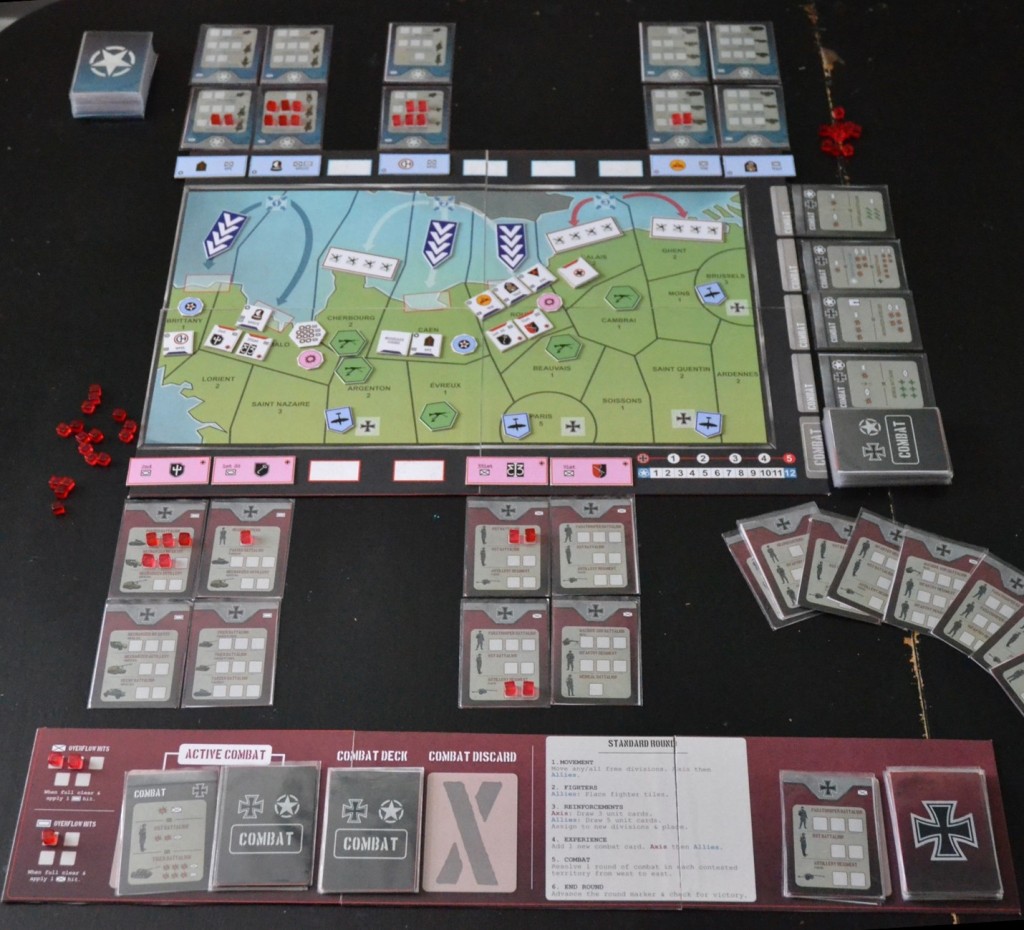
Philip: The map shows the northern region of France and Belgium, highlighting the coastline available for the Allies to attack. The Allies will commit to three lanes of attack at the start of the game. All future reinforcements must come through these lanes. The territory is broken up into spaces, each worth a certain number of victory points. The board also has slots for divisions and unit cards as well as available combat cards.
Grant: Who is the artist for the project? How has their work complemented your design process?
Philip: Our artist is Lenais Goumon. She has worked for Jim before and has done a great job on this project. Each unit type is uniquely illustrated and all the layout is clear and evocative of the theme. It did not take long for her to understand what we were trying to achieve and to produce all the necessary components while hitting Jim’s targets for size and space. It’s always nice to see a more beautiful version of the game that you have created and tested for so long!
Grant: How is victory achieved?
Philip: As mentioned previously, the territories are all worth different amounts. The Allies are trying to capture 12 points of territory before the end of round 4. While the historical result was not a foregone conclusion by any means, we did want to acknowledge the overwhelming might of the Allied forces. With no time limit, the Allies are nearly guaranteed to win. To maintain the tension of the game, the Allies need to amass the necessary 12 points quickly to win. The Axis side also have a good chance of winning. They just need to hold out long enough and slow the Allied advance just enough to be declared the winner.
Grant: What type of an experience does the game create?
Philip: I hope the historical drama has been represented. I want players to be making some of the same decisions that Eisenhower or Rommel had to make. I would like the end to be in doubt right up until the last battle (it often is). I want the game to feel quick and easy to play while still delivering a deep and epic sense of the historical conflict.
Grant: What are you most pleased about with the outcome of the design?
Philip: I’m just happy that my dad and I both enjoy the game so much. We have spent many hours together plotting and planning. It has been such a joy to see this project realized.
Grant: What has been the feedback of your playtesters?
Philip: While there are usually a few suggestions, most of the playtesters enjoyed the game. I was especially pleased that Jason Matthews (legendary designer of Twilight Struggle and many other games) took the time to play it and had a very positive experience.
Grant: What other designs are you currently working on?
Philip: I have several more designs coming in the near future and many others in various stages of prototype. Look for my game about The Great Escape later this year from Sound of Drums. I am also looking forward to the crowdfunding of a yet-to-be-announced game from Ape Games which uses a similar combat card system—it’s going to be epic! I am also hoping to see a big announcement from Starling Games soon concerning the future of Black Orchestra…
Thanks for all the great questions!
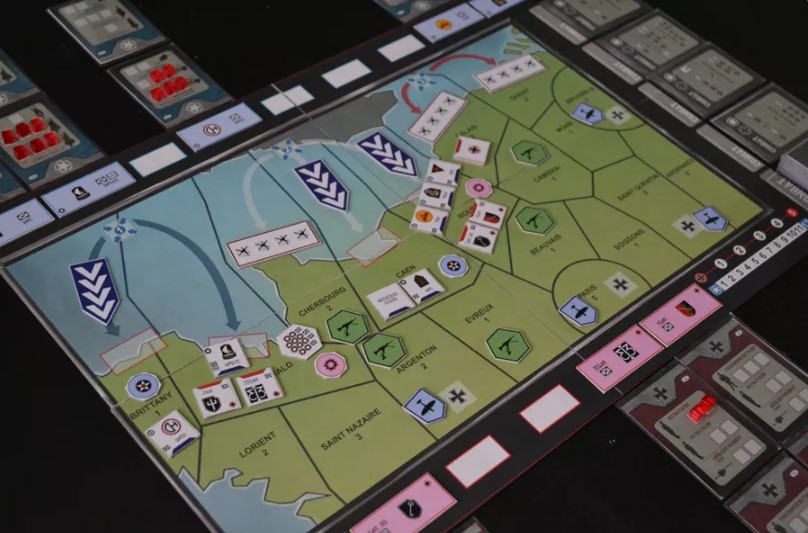
Thank you for your time with this interview Philip. I really appreciate the fact that you responded quickly and provided the answers in very short order. I wish you luck in this campaign and also am very interested in some of your upcoming projects, especially that news about Black Orchestra!
If you are interested in Order of the Day: Normandy, you can back the project on the Kickstarter page at the following link: https://www.kickstarter.com/projects/dietzfoundation/order-of-the-day-normandy
-Grant
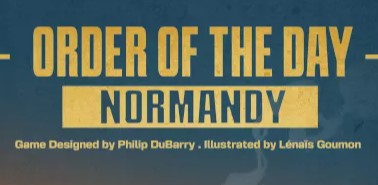
Grant, greetings from downunder, thanks for this interview.
<
div>I looked the game up
LikeLiked by 1 person